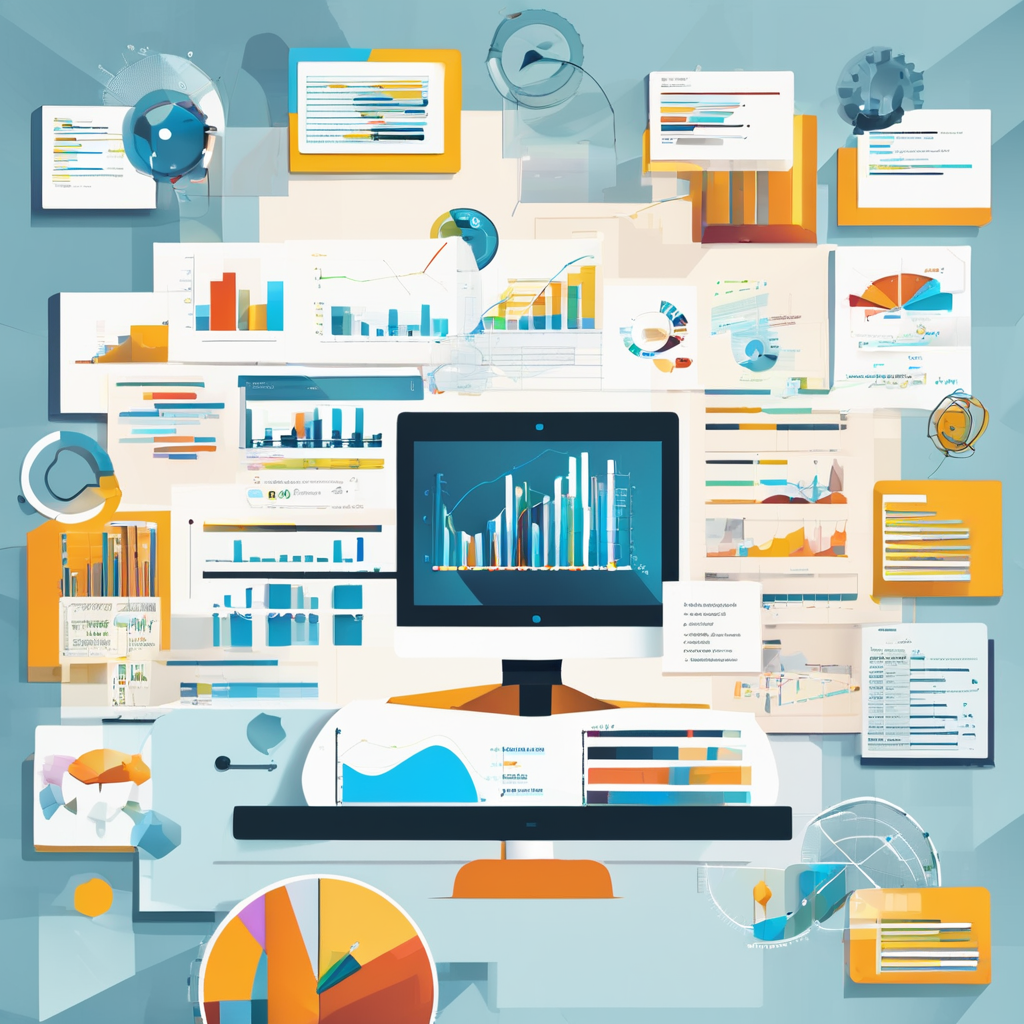Data analytics tools are essential for businesses to make informed decisions and derive valuable insights from their data. These tools help organizations collect, analyze, and visualize data to gain a deeper understanding of their operations, customers, and market trends. In today’s data-driven world, having the right data analytics tools can give companies a competitive edge and drive growth. Let’s explore some of the top data analytics tools that are popular among businesses of all sizes.
One of the most widely used data analytics tools is Tableau. Tableau is known for its user-friendly interface and powerful data visualization capabilities. With Tableau, users can create interactive dashboards and reports to explore data and share insights with stakeholders. This tool is popular among data analysts and business intelligence professionals for its ease of use and robust features.
Another popular data analytics tool is Google Analytics. Google Analytics is a web analytics service that tracks and reports website traffic, providing valuable information about user behavior and website performance. Businesses use Google Analytics to optimize their online presence, improve marketing strategies, and enhance user experience on their websites.
Microsoft Power BI is a leading business analytics tool that enables users to visualize and share insights from their data. Power BI integrates with a wide range of data sources, allowing users to create interactive reports and dashboards that can be accessed on multiple devices. This tool is popular among business users for its intuitive interface and powerful data modeling capabilities.
Python is a versatile programming language that is widely used for data analysis and machine learning. With libraries like Pandas and NumPy, Python allows users to manipulate and analyze large datasets efficiently. Data scientists and data analysts use Python for data cleaning, exploration, and modeling, making it a valuable tool in the field of data analytics.
R is another popular programming language for statistical computing and data analysis. R offers a wide range of packages and libraries for data manipulation, visualization, and modeling. Data scientists and statisticians use R for exploratory data analysis, statistical modeling, and predictive analytics, making it a preferred tool for advanced data analytics tasks.
SAS (Statistical Analysis System) is a software suite used for advanced analytics, multivariate analysis, and predictive modeling. SAS is widely used in industries such as healthcare, finance, and retail for its robust data processing capabilities and statistical analysis tools. Data analysts and researchers use SAS for data mining, forecasting, and risk analysis.
IBM Watson Analytics is a cloud-based data analytics platform that enables users to explore and analyze data using natural language processing. Watson Analytics automates data preparation, visualization, and predictive analytics, making it easy for users to derive insights from their data. This tool is popular among business users for its cognitive computing capabilities and user-friendly interface.
Apache Spark is a fast and powerful big data processing engine that is commonly used for large-scale data analytics. Spark enables users to process and analyze massive datasets in real-time, making it ideal for applications that require high-speed data processing. Data engineers and data scientists use Apache Spark for machine learning, graph processing, and stream processing tasks.
QlikView is a business intelligence tool that allows users to create interactive dashboards and visualizations from multiple data sources. QlikView’s associative data model enables users to explore data relationships and uncover hidden insights in their data. This tool is popular among business users for its intuitive drag-and-drop interface and powerful data discovery capabilities.
Lastly, Amazon Redshift is a cloud-based data warehousing solution that enables users to analyze large volumes of data quickly and cost-effectively. Redshift is known for its scalability and performance, allowing users to run complex queries on massive datasets with ease. Businesses use Amazon Redshift for data warehousing, business intelligence, and advanced analytics tasks.
In conclusion, data analytics tools play a crucial role in helping businesses harness the power of data to drive decision-making and innovation. Whether it’s data visualization, statistical analysis, or machine learning, having the right tools can empower organizations to unlock valuable insights from their data. By leveraging tools like Tableau, Google Analytics, Python, and SAS, businesses can stay competitive in today’s data-driven landscape and make data-informed decisions that propel growth and success.
